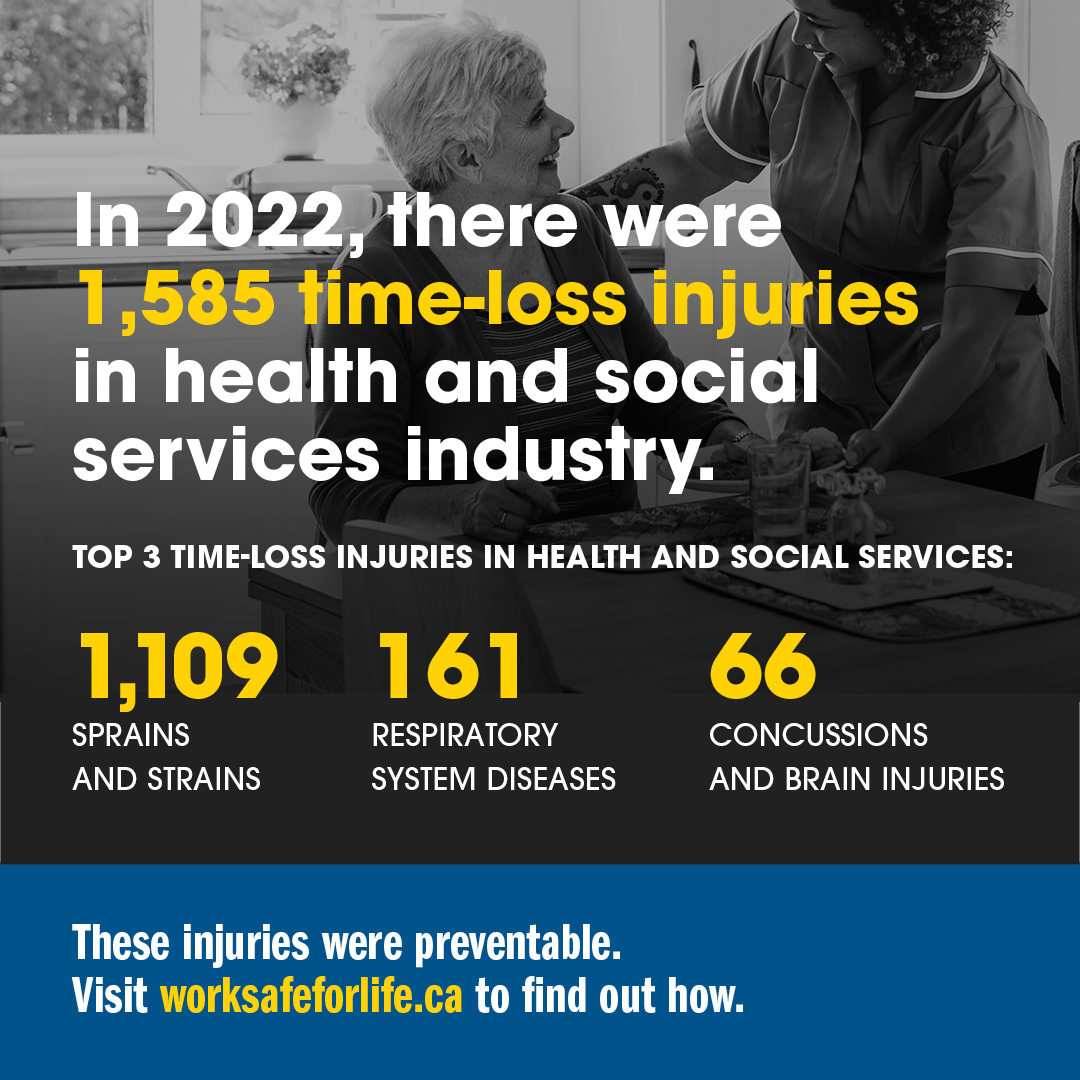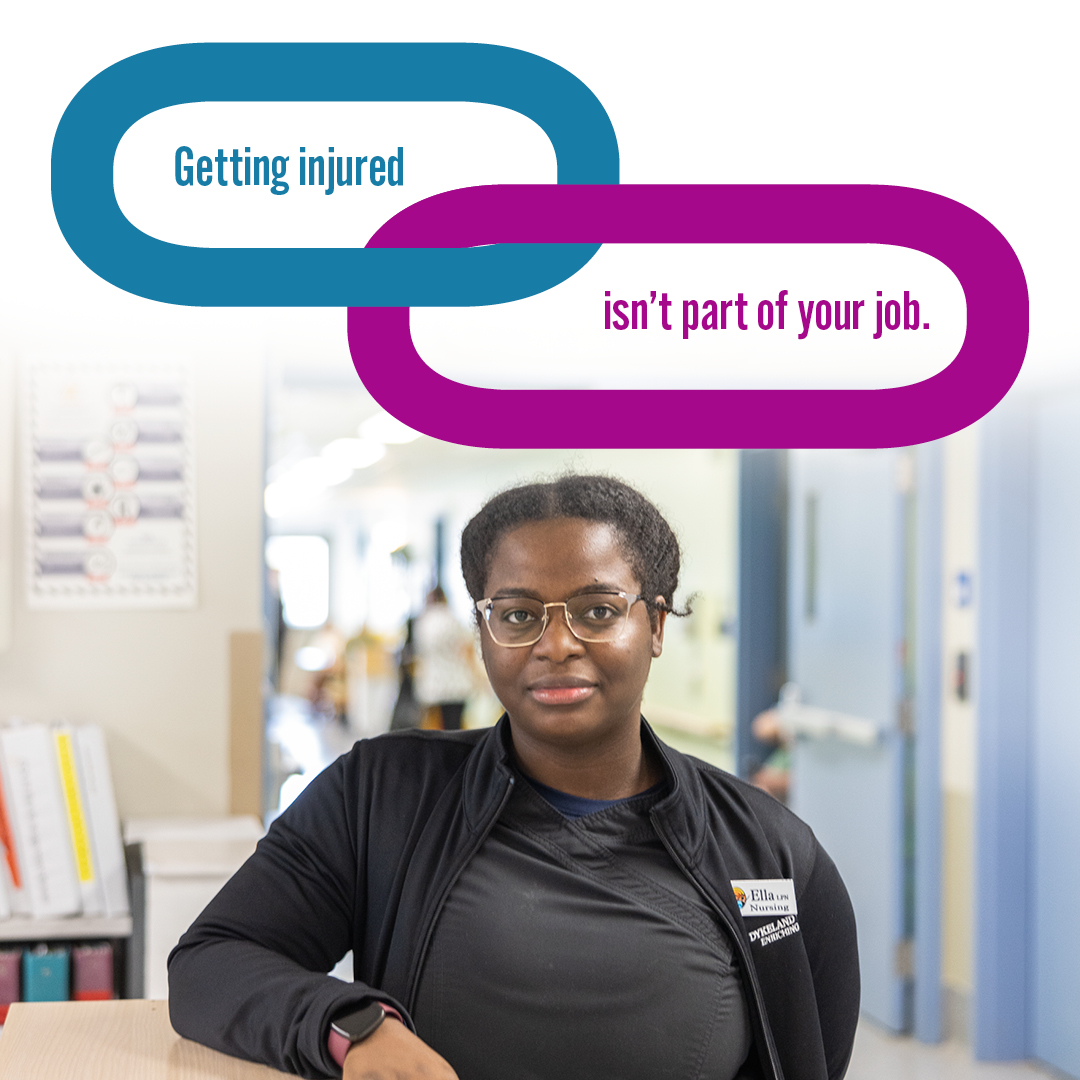
Nova Scotia's largest industry group, health and social services, play a vital role in the health and well-being of Nova Scotians. The industry includes hospitals and health centres, long-term care, home care, social services, primary care providers, and mental health and addiction services.
Health and community service sectors account for almost 30 per cent of time-loss claims meaning that three out of ten time-loss claims originate in these sectors.
Workers in this industry face numerous workplace safety issues and are more likely to be injured on the job than any other worker.
The following workplace hazards are common in the health and social services industry:
- Musculoskeletal injuries (sprains/strains)
- Infectious diseases
- Workplace Violence
- Chemical hazard
- Psychological hazards
- Electrical hazards
Better Safety, Better Care Campaign

Homes, facilities, and communities across Nova Scotia are workplaces for home care and long-term care providers. The awareness campaign, Better Safety, Better Care, reminds Nova Scotians about the important connection between the safety and well-being of workers, and their ability to provide safe and healthy care to their clients and residents. Together, we can keep care providers safe, healthy, and caring for Nova Scotians. Show your support. Make the connection at www.safecareconnection.ca.
The campaign is a collaborative initiative between WCB Nova Scotia; the Government of Nova Scotia, including the departments of Seniors and Long-term Care (SLTC) and Labour, Skills & Immigration (LSI); and AWARE-NS, the Nova Scotia Health and Community Services Safety Association.
Resources
Use the OH&S Risk Mapping Tool for injury prevention to identify and mitigate these risks.
AWARE-NS is committed to building a workplace safety culture in the healthcare and community services sectors.
AWARE-NS and WCB Nova Scotia have developed and are delivering the Lifting and Moving Safely (LAMS) Program in Long Term Care (LTC), Home Care (HC), and Disability Support Programs (DSP) organizations. The program includes tools and resources to support workplaces in preventing musculoskeletal injuries associated with non-care tasks.
The Safe Handling and Mobility Program was also developed in partnership with AWARE-NS to protect both workers and residents during the lifting, transferring and repositioning of residents, patients, and clients.
Canadian Centre for Occupational Health and Safety
Working to Well - Return to Work website
Point of Care Assessment Tools:
- PACE Yourself - A health care worker's guide for assistance
- PACE Yourself Pictogram - A poster for workplaces
- P- Physical - Slings - Sling selection and integrity checklist
- P- Physical - Transfers - An assessment based on mobility
- P- Physical - Repositioning - A guide for bed repositioning
- A - Agitation - Safe handling guide for agitated or aggressive behaviour
- C - Communication - Safe handling guide for better communication
- E - Environment - Conduct an environmental scan to identify hazards and evaluate risk
- PACE Form - Sample safe resident handling assessment form
- PACE Logos - For download and printing